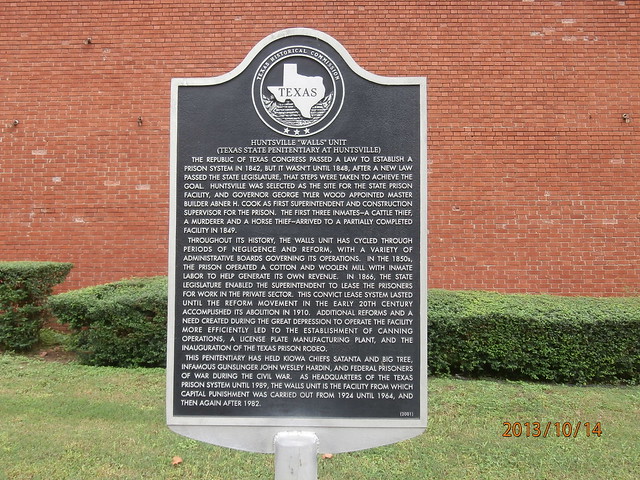
glennhistorygeek on Flickr
All Rights Reserved
Huntsville "Walls" Unit. (Texas State Penitentiary at Huntsville) The Republic of Texas Congress passed a law to establish a prison system in 1842, but it wasn't until 1848, after a new law passed the state legislature, that steps were taken to achieve the goal. Huntsville was selected as the site for the state prison facility, and Governor George Tyler Wood appointed master builder Abner H. Cook as first superintendent and construction supervisor for the prison. The first three inmates -- a cattle thief, a murderer and a horse thief -- arrived to a partially completed facility in 1849. Throughout its history, the Walls Unit has cycled through periods of negligence and reform, with a variety of administrative boards governing its operations. In the 1850s, the prison operated a cotton and woolen mill with inmate labor to help generate its own revenue. In 1866, the state legislature enabled the superintendent to lease the prisoners for work in the private sector. This convict lease system lasted until the reform movement in the early 20th century accomplished its abolition in 1910. Additional reforms and a need created during the Great Depression to operate the facility more efficiently led to the establishment of canning operations, a license plate manufacturing plant, and the inauguration of the Texas Prison Rodeo. This penitentiary has held Kiowa chiefs Satanta and Big Tree, infamous gunslinger John Wesley Hardin, and Federal prisoners of war during the Civil War. As headquarters of the Texas prison system until 1989, the Walls Unit is the facility from which capital punishment was carried out from 1924 until 1964, and then again after 1982. (2001) #12577
by Texas Historical Commission #12577 of the Texas Historical Marker series
Colour: black
Wikimedia:
Flickr:



